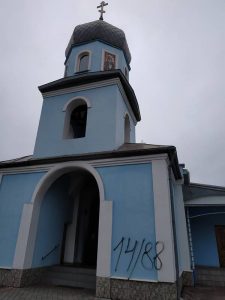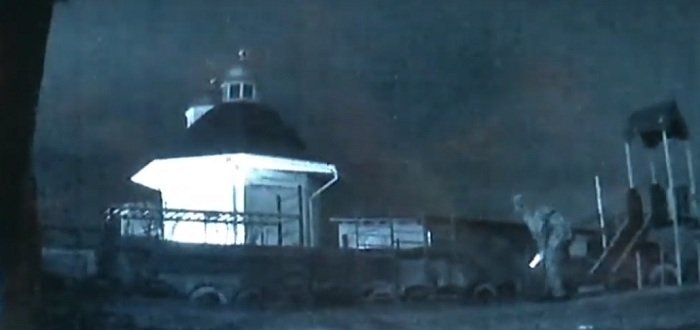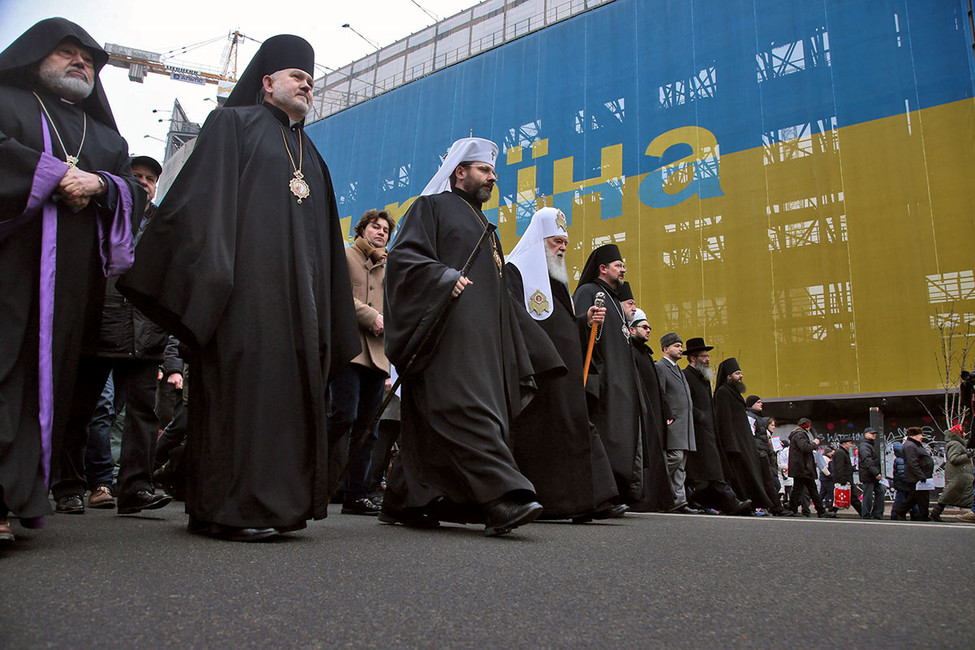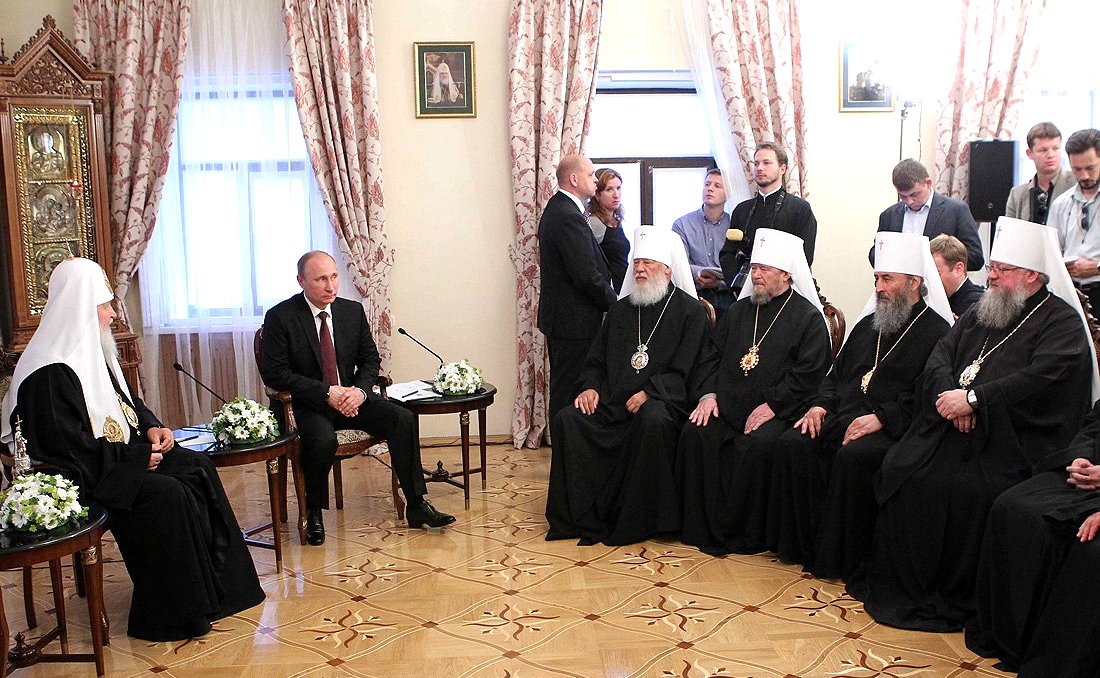When the arsons began
As early as at the night of 6 February 2019, unknown persons set fire to the temple of Oleksiy Karpatoruskyi, belonging to the Ukrainian Orthodox Church under the Moscow Patriarchate and located in Zaporizhzhia in Eastern Ukraine. Notably, two bolts of lightning were spraypainted on the wall of the church to suggest a connection with the SS and “Ukrainian fascism,” the phantom of which Russian propaganda has been fabricating non-stop since the Euromaidan revolution.

On 9 February, SBU reported it has proof that the Russian FSB and the “Ministry of state security” of Russia’s proxy “republics” in eastern Ukraine (MGB DNR) had been recruiting Ukrainians to set fire to Moscow Patriarchate churches in Ukraine for US$2000. The arson had to be filmed and after that money was paid. The organizers provided direct instructions to those willing to do the “job.” These instructions were published by the SBU:
“Draw on the spot any of the proposed symbols; start filming, record the darkness and the moment of ignition. Record 10 seconds of burning. Burning to the ground is not necessary, it’s enough for the temple to simply start burning. You can choose any object.. Be sure it is from the MOSCOW PATRIARCHATE. Have a phone WITHOUT A SIM-CARD to the arson, put the phone in flight mode at the time of filming, so that it does not show up on any Wi-Fi.”
On 9 February, Ukrainian representatives reported about the Russian activity to recruit people for burning churches and therefore creating provocations to the OSCE.
Despite these reports and investigation conducted by SBU, the arsons continued in next days. On 10 February, unknown people threw a bottle with a flammable mixture into the Illinska church in Mykolayiv Oblast. During the night of 16 February, the doors of the сhurch of Lord’s Ascension in Kryvyi Rih were burned. 14/88 numbers, which are also associated with extreme right organizations, were written near the doors.


Proof of Russian roots of the provocations and revealed plans
On 16 February, the SBU conducted a successful operation in Zaporizhzhia and detained an executor and his ally while they were trying to set a church in the city on fire. The detention itself, as well as the offenders’ preparation, was filmed by hidden cameras. Some fragments of these records are in the video below.
[embedyt] https://www.youtube.com/watch?v=X0PCisIY70A[/embedyt]
The first part of the video shows the crime being prepared. Then, the offender is seen approaching the church and igniting the building. Next, the detention is filmed and the executor’s confession is in the end.
The information revealed thanks to this detention and other operations was publicly reported by Vasyl Hrytsak, the SBU Head, on Monday, 18 February.
"The Security Service of Ukraine has gathered uncontested evidence that these arsons and provocations were ordered, organized, and financed by the Russian special services through the so-called MDB DNR structures under their control," Vasyl Hrytsak told.
Immediately after the detention of the executor in Zaporizhzhia, the local organizer was also detained. The organizers were established to be Ukrainian citizens who had run away to Russia’s proxy “republics” in Donbas. They are Artem Tymchenko and Andriy Kuzmenko. Both reside in the “Donetsk People’s Republic” and are wanted in Ukraine under suspicion of committing criminal offenses.
The SBU obtained a general plan of so-called operational measures. It confirms that the provocations were planned in advance and on purpose. The plan was prepared in the MDB DNR and was agreed with their curators from the Rostov Department of the FSB of the Russian Federation. The plan was created by Yegor Soboliev, a former SBU employee who had turned to serve the Russian-run “republics,” currently serving as one of the managers of MDB DNR.

The plan contains a list of 20 parishes that were planned for arsons. Importantly, not only parishes of the Moscow Patriarchate are on the list. It includes also a Roman Catholic Church, synagogues, Armenian and Bulgarian churches. It seems that the aim of the provocations was not only to show the hostility of Ukrainians to the Moscow church, but to show that “mad Ukrainian nazis kill everyone without any distinction” as Oleksandr Snidalov, a Ukrainian activist, sarcastically commented on the events.

According to the plan, a certain Ukrainian nationalist, soldier, or organization were planned to be accused for each burned parish. As a method, many fake accounts had to be created and fake e-mails had to be sent allegedly from Ukrainian nationalists with intimidations of physical violence or even death. Authoritative church figures were to receive these e-mails and some physical violence was indeed planned, according to the head of SBU.
Creating chaos and the image of violent Ukrainians endangering Russians or Russian-speakers is a traditional Russian tactic for legitimizing an invasion.
Following the Euromaidan revolution, Russian President Vladimir Putin stated he reserved the right to “protect Russians in Ukraine” amid the Russian invasion of Crimea. As Russian officials were busy discussing plans
of stimulating and funding mass unrest in Ukraine’s Russophonic south-east, Vladimir Putin complained to US President Barack Obama about Ukraine’s “inability” to protect its Russian-speakers.
This is why Ukraine shuddered at Vladimir Putin’s vow to “protect” believers of the Moscow Patriarchate in Ukraine after Russia failed to derail the Ukrainian Orthodox Church from attaining independence from Moscow.
We can’t know for sure that the recent provocations with arsons were to create a pretext for a large-scale military intrusion or to legitimize any other serious pressure on Ukraine. That possibility can’t be ruled out, since 87 000 of troops are currently situated on the border of Ukraine, according to president Poroshenko.
However, it’s absolutely evident that Russia is not reducing its pressure but is continuously trying to grasp any weaknesses of Ukraine and restore its control. And that, apart from leading an international campaign to boycott the newly-independent Ukrainian Church, Russia will continue trying to stir up religious tensions from within Ukraine.
Read more:
- Ukraine publishes video proving Kremlin directed separatism in eastern Ukraine and Crimea
- New independent church and Moscow Patriarchate vie for parishes in Ukraine
- Ukrainian Orthodox Church head says Russian Orthodox Church will remain in Ukraine as many want it and he’s not against that
Edited by Alya Shandra





